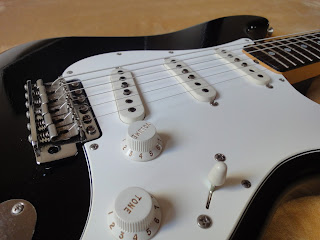Short answer: No
The Celestion Gold is too big. Even with the aluminum cover removed from the back of the Celestion, the magnet of the loudspeaker won't get clear of the chassis of the Pro Junior by about 5mm.
Longer answer: It's possible if you want it bad enough and take out your tools. The following pictures illustrate the process.
The cover of the Celestion needs to be removed. Remove the screw and gently lift the cover off with a screw driver (there's some silicon paste between the cover and the loudspeeker that generates some resistance).
The pictures above illustrate what you save in terms of depth.
But it's not enough. The problem is that the Celestion's magnet is also too big in diameter.
So the critical part of the chassis of the Pro Junior needs to be removed. It can be done with a Dremel like cutter. Make sure to protect the electrical parts and circuit board of the amp from the shavings (covering everithing with tape works good enough).
I took my time cutting - with ear and eye protection. This is about half way through. Each of the long cuts took 10 to 15 minutes.
After cutting and cleaning the edges - not beautiful but effective.
Fits like a glove now.
The tubes have enough clearance.


































